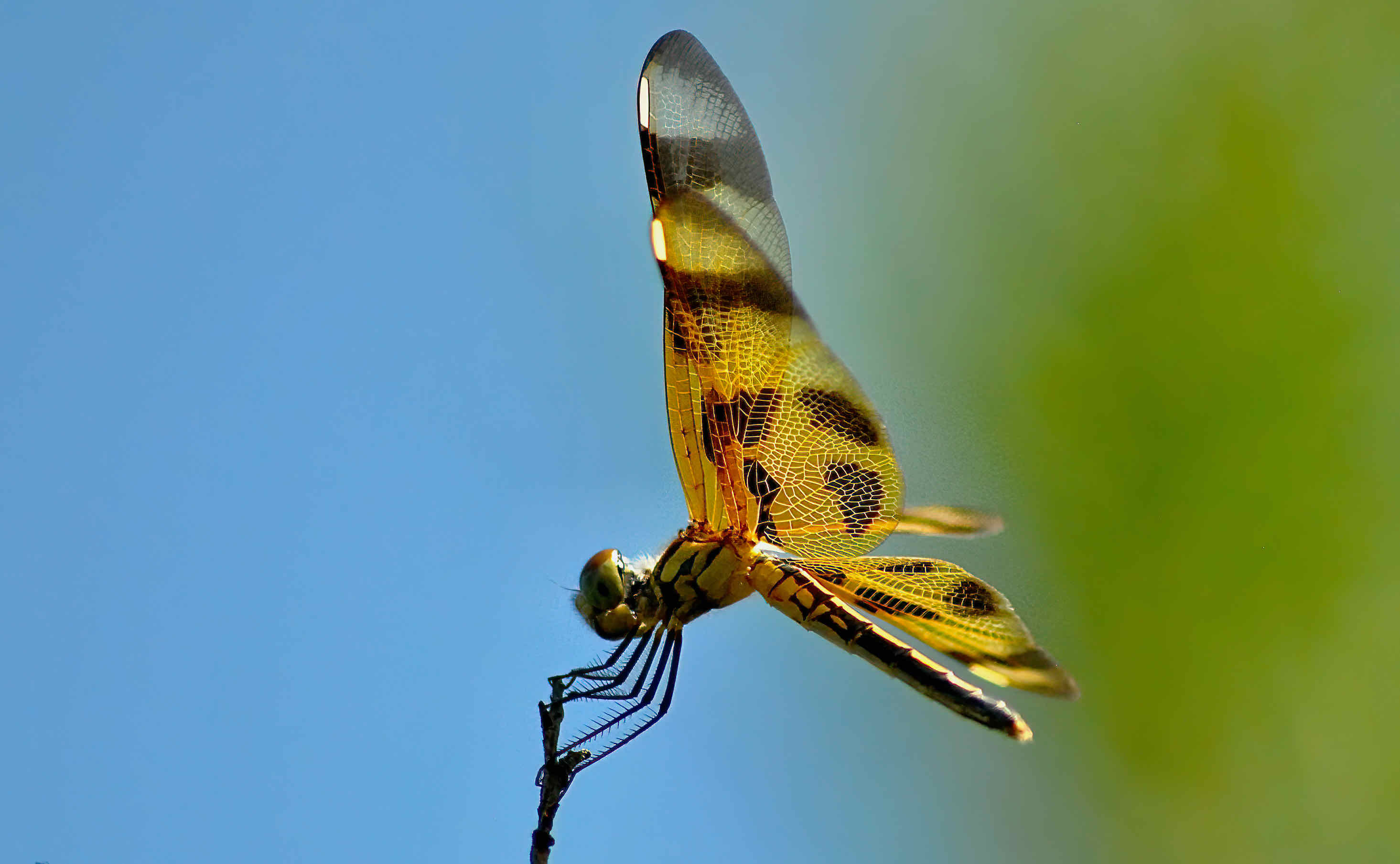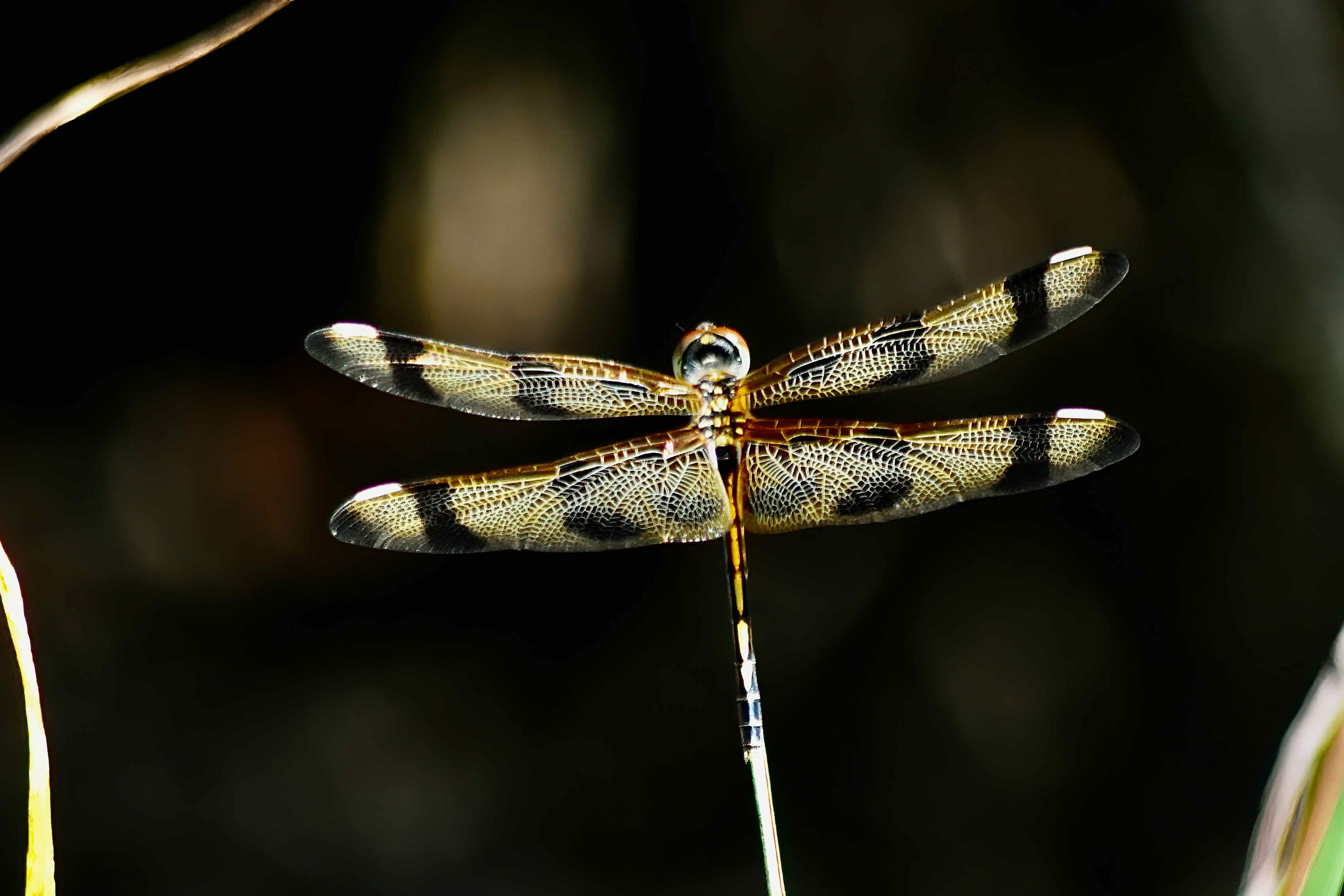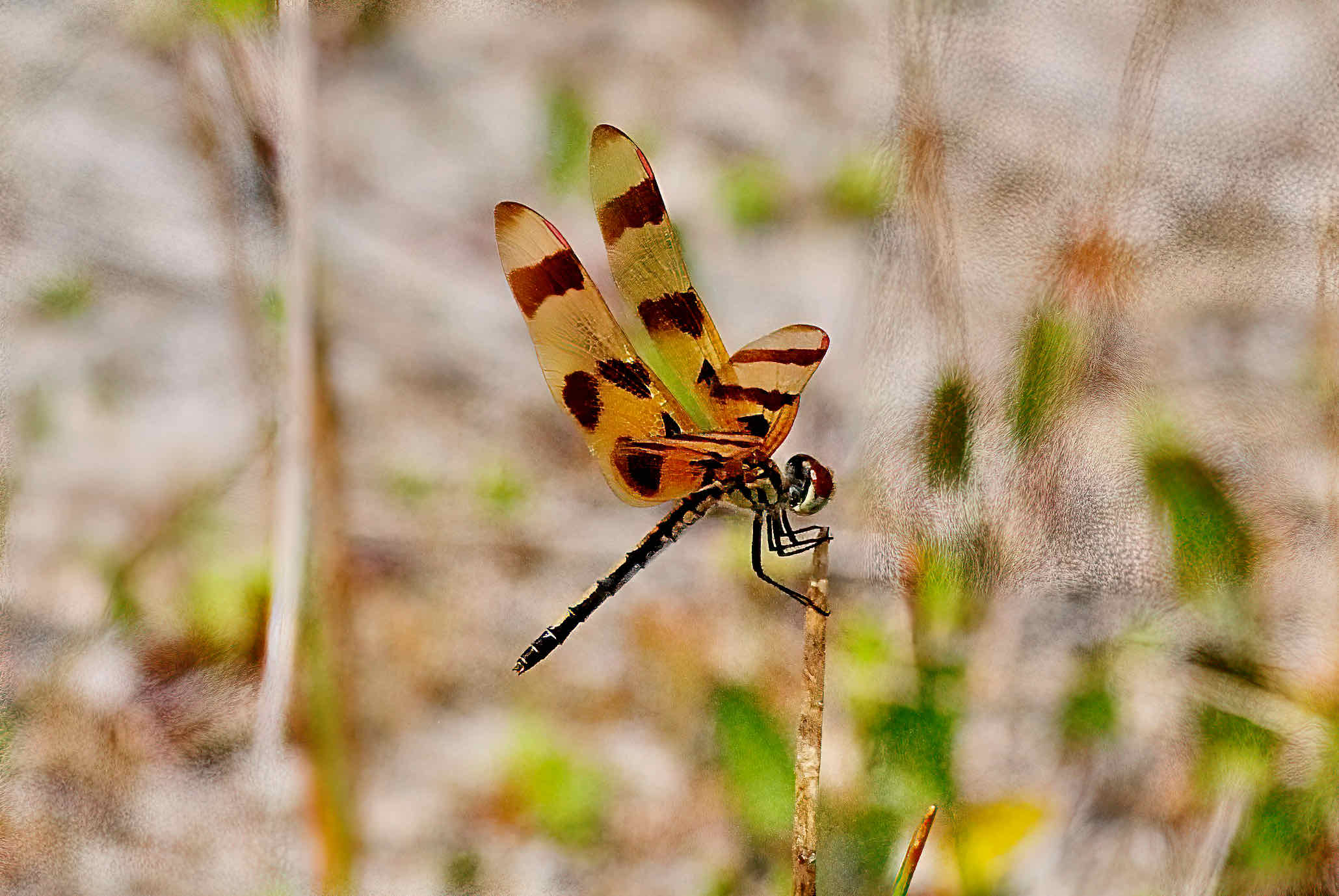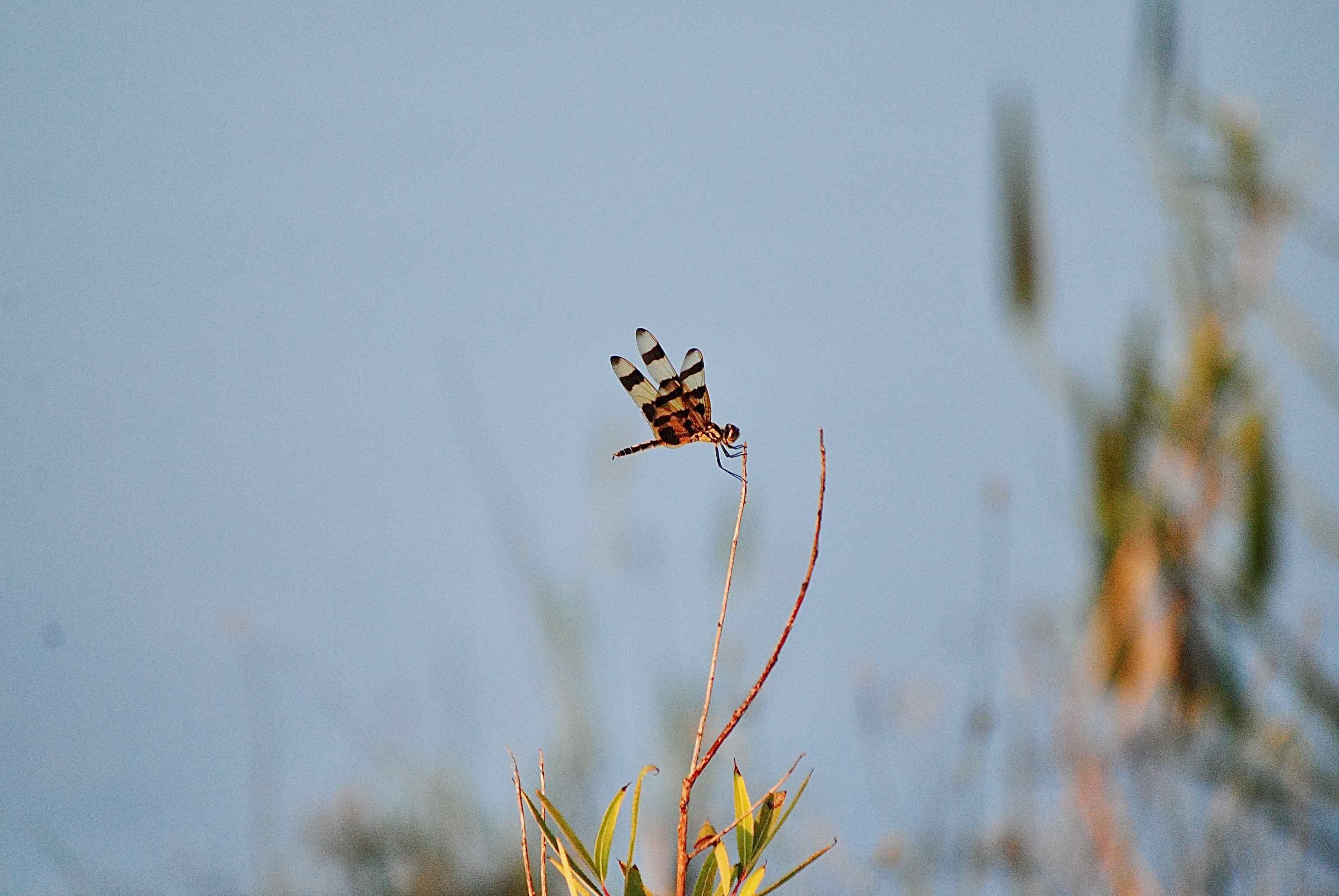
Halloween pennant dragonfly, photographed at Yamato Scrub Natural Area, Boca Raton, Palm Beach County, in August 2013.
If you hate mosquitos, you might like this bug: the Halloween pennant dragonfly, Celithemis eponina. It eats mosquitos for dinner. It eats them for lunch. It eats them for breakfast. Yum! Even as larvae, it has a taste for mosquito.
And more bad news for the mosquito populaton: by our observations, Halloween pennants are among the most abundant, if not the most abundant dragonfly in South Florida. The Halloween pennant also has an extremely wide range, found as far west as New Mexico and Colorado, east to the Atlantic seaboard, including Florida, and north into Ontario. They're also found in Cuba and the Bahamas. In warmer places, like Florida, Halloween pennants are active year-round; up north, they're on the fly roughly June into September.
Halloween pennants get their common name from the colors they sport and their habit of perching atop vegetation looking like a flag. The wings of mature males are a mix of bright orange and black bands. The wings of younger males and females are more yellowish than orange but still have the mix of black. Halloween pennants also have a yellow or red abdominal stripe, which, in males, darkens as they age. They're medium-sized as dragonflies go (though on the larger side for the Celithemis genus), with a body length of about an inch-and-a-half to an inch-and-three-quarters. Their legs are barbed, enabling them to perch and grasp prey. (The barbs can be seen in the photo above.)
They're found near ponds and marshes, which is not surprising since they spend the first part of their lives entirely in water. But they can be found at some distance from water as well. As nymphs, they feast on mosquito larvae as well as the young of other insect species, including other dragonflies, though not of their own kind. Also on their menu: snails, shrimp and crayfish. Larger nymphs may even eat fish and tadpoles. They propel themselves through the water by shooting air out their anus. Yes, their butthole! When they are mature, they will molt one final time and emerge out of the water as adults and take off into the air.
Hwlloween pennant dragonflies are strong flyers and will brave winds and rains that force other species to take shelter. They will perch atop plants with their bodies out, looking like a flag starched in the wind and waiting for a tasty meal to come by. Besides mosquitos, they'll feast on other flying insects, including other dragonflies.
When Halloween pennants mate, the male grabs the female behind her head using apendages on the end his abdomen. The female extends the end of her abdomen to his in what's called a wheel formation in order to receive his sperm. They break the wheel, with the female detaching from the male's abdomen, but the male continue to hold hold the female from behind her head. The two remain locked as they fly down to water, where she'll stick the tip of her abdomen beneath the surface and release her eggs. Only then will the couple detach and go about their business separately. Halloween pennant males are not territorial, unlike other dragonflies.
Halloween pennants are members of Libellulidae, the family of skimmer and percher dragonflies.



